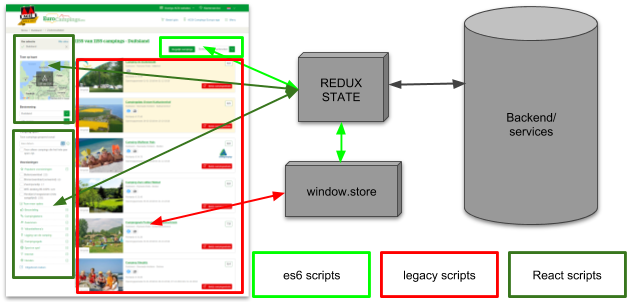This year it seemed right to do some review of the last year. A year in which I learned a lot, gained new insights and even more questions..
Direction of the web
A lot have been written about the web by a lot of people with more influence than me. Hence I also don’t like the direction where the web is heading. 60-70 percent of the internet is owned well known large corporations. And the gap to publish something totally by yourself is getting larger and larger.
I like to compare it with houses, not many people can build a brick house by themselves, nevertheless if needed anyone can build a functional shelter. This shelter is something you get, know instantly how to build one all by yourself and own it. The digital equivalent of a shelter is a online publication or a post which unfortunately is owned directly by a large company. I would love to see people own the internet again publish completely on their own.
Online marketing
This year the divide between online marketing and engineering became more clear and present. I am even on the verge of diving deep into the world of online marketing because I do not understand it anymore. I always had a vision that when an online product solved a genuine problem for people that you should never hinder people.
Nevertheless it seems necessary to add bigdata, popovers, slide-ins, conversion footers eg. to increase the revenue.
Next year I really want to learn more about this balance. An hope to find answers in big data and measurements.
I still have the feeling that online products should be free of annoyances. Hence if allowed, lots of people would possibly prefer to drive a car with ad banners on the windscreen.
Front-end
This year we took some big steps to out vision to remove jQuery the next year. Unfortunately we still see IE11 sticking at 4 percent of our users. Which sometimes makes me sad. I prefer programming over implementing or finding fixes for browser inconsistencies for IE and sometimes IOS. Nevertheless it is part of the job might fall in the same category as emptying queues for backenders.
Learning goals
My main learning focus will be the same as last year; keep up with front-end, learn more on software architecture and get deeper in to linux/shell scripting.
To broaden my knowledge I want to extend my Node.js skills and dive deeper in Python.
Smaller topics I want to spend time on are:
- Gain more insights in the balance between Online marketing and UX as a business goal
- Building teams and motivating people
- Typescript
- Webassembly
- Variable fonts
- Service workers
- Ethics and technology
Conclusion
Next will be again full of exciting things in technology, but I also predict a shift in balance. I hope that that more people will walk up straight instead of bent down on their phone (myself included).
For myself I am keen on learning a lot and keeping the nice life/work balance…

